The close interaction between hypoxia-related proteins and metastasis in pancarcinomas
- PMID: 35773405
- PMCID: PMC9246854
- DOI: 10.1038/s41598-022-15246-y
The close interaction between hypoxia-related proteins and metastasis in pancarcinomas
Abstract
Many primary-tumor subregions exhibit low levels of molecular oxygen and restricted access to nutrients due to poor vascularization in the tissue, phenomenon known as hypoxia. Hypoxic tumors are able to regulate the expression of certain genes and signaling molecules in the microenvironment that shift it towards a more aggressive phenotype. The transcriptional landscape of the tumor favors malignant transformation of neighboring cells and their migration to distant sites. Herein, we focused on identifying key proteins that participate in the signaling crossroads between hypoxic environment and metastasis progression that remain poorly defined. To shed light on these mechanisms, we performed an integrated multi-omics analysis encompassing genomic/transcriptomic alterations of hypoxia-related genes and Buffa hypoxia scores across 17 pancarcinomas taken from the PanCancer Atlas project from The Cancer Genome Atlas consortium, protein-protein interactome network, shortest paths from hypoxia-related proteins to metastatic and angiogenic phenotypes, and drugs involved in current clinical trials to treat the metastatic disease. As results, we identified 30 hypoxia-related proteins highly involved in metastasis and angiogenesis. This set of proteins, validated with the MSK-MET Project, could represent key targets for developing therapies. The upregulation of mRNA was the most prevalent alteration in all cancer types. The highest frequencies of genomic/transcriptomic alterations and hypoxia score belonged to tumor stage 4 and positive metastatic status in all pancarcinomas. The most significantly associated signaling pathways were HIF-1, PI3K-Akt, thyroid hormone, ErbB, FoxO, mTOR, insulin, MAPK, Ras, AMPK, and VEGF. The interactome network revealed high-confidence interactions among hypoxic and metastatic proteins. The analysis of shortest paths revealed several ways to spread metastasis and angiogenesis from hypoxic proteins. Lastly, we identified 23 drugs enrolled in clinical trials focused on metastatic disease treatment. Six of them were involved in advanced-stage clinical trials: aflibercept, bevacizumab, cetuximab, erlotinib, ipatasertib, and panitumumab.
© 2022. The Author(s).
Conflict of interest statement
The authors declare no competing interests.
Figures
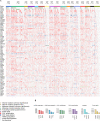
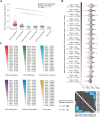

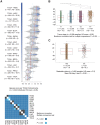
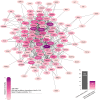
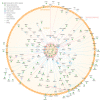
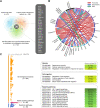

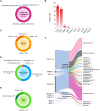
Similar articles
-
A macrophage-dominant PI3K isoform controls hypoxia-induced HIF1α and HIF2α stability and tumor growth, angiogenesis, and metastasis.Mol Cancer Res. 2014 Oct;12(10):1520-31. doi: 10.1158/1541-7786.MCR-13-0682. Epub 2014 Aug 7. Mol Cancer Res. 2014. PMID: 25103499
-
The inhibition of hypoxia-induced angiogenesis and metastasis by cinnamaldehyde is mediated by decreasing HIF-1α protein synthesis via PI3K/Akt pathway.Biofactors. 2019 May;45(3):401-415. doi: 10.1002/biof.1499. Epub 2019 Mar 10. Biofactors. 2019. PMID: 30854715
-
Magnolol suppresses hypoxia-induced angiogenesis via inhibition of HIF-1α/VEGF signaling pathway in human bladder cancer cells.Biochem Pharmacol. 2013 May 1;85(9):1278-87. doi: 10.1016/j.bcp.2013.02.009. Epub 2013 Feb 14. Biochem Pharmacol. 2013. PMID: 23416116
-
Hypoxic control of metastasis.Science. 2016 Apr 8;352(6282):175-80. doi: 10.1126/science.aaf4405. Epub 2016 Apr 7. Science. 2016. PMID: 27124451 Free PMC article. Review.
-
The role of hypoxia on prostate cancer progression and metastasis.Mol Biol Rep. 2023 Apr;50(4):3873-3884. doi: 10.1007/s11033-023-08251-5. Epub 2023 Feb 14. Mol Biol Rep. 2023. PMID: 36787054 Free PMC article. Review.
Cited by
-
CardiOmics signatures reveal therapeutically actionable targets and drugs for cardiovascular diseases.Heliyon. 2023 Dec 14;10(1):e23682. doi: 10.1016/j.heliyon.2023.e23682. eCollection 2024 Jan 15. Heliyon. 2023. PMID: 38187312 Free PMC article.
-
Integrated multi-omics analysis reveals the molecular interplay between circadian clocks and cancer pathogenesis.Sci Rep. 2023 Aug 30;13(1):14198. doi: 10.1038/s41598-023-39401-1. Sci Rep. 2023. PMID: 37648722 Free PMC article.
-
Global analysis of actionable genomic alterations in thyroid cancer and precision-based pharmacogenomic strategies.Front Pharmacol. 2025 Apr 14;16:1524623. doi: 10.3389/fphar.2025.1524623. eCollection 2025. Front Pharmacol. 2025. PMID: 40297138 Free PMC article.
-
High hypoxia status in pancreatic cancer is associated with multiple hallmarks of an immunosuppressive tumor microenvironment.Front Immunol. 2024 Mar 6;15:1360629. doi: 10.3389/fimmu.2024.1360629. eCollection 2024. Front Immunol. 2024. PMID: 38510243 Free PMC article.
-
Unraveling druggable cancer-driving proteins and targeted drugs using artificial intelligence and multi-omics analyses.Sci Rep. 2024 Aug 21;14(1):19359. doi: 10.1038/s41598-024-68565-7. Sci Rep. 2024. PMID: 39169044 Free PMC article.
References
Publication types
MeSH terms
Substances
LinkOut - more resources
Full Text Sources
Medical
Research Materials
Miscellaneous

